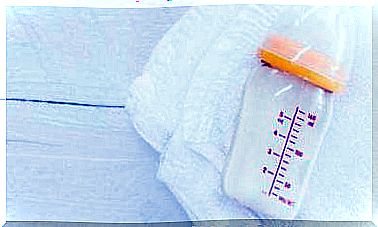Diet For Children With Celiac Disease – Being Parents

Knowing the management of celiac disease is the best strategy to avoid the symptoms related to the pathology. Therefore, in this article we tell you everything you need to know about it.
What is celiac disease?
Celiac disease is a systemic alteration of an autoimmune nature triggered by the consumption of gluten in people with a genetic predisposition.
What is gluten and why does it cause side effects?
Gluten is a complex protein, formed by prolamins, found in grains such as wheat, barley, spelled and rye. Additionally, oatmeal affects some people as well, although it does not contain this protein.
These prolamins (fragments of gluten) are subdivided into gliadins and glutenins and are the source of toxicity. This is because the adverse reaction occurs because the immune system of people with celiac disease to detect these substances causes an inflammatory reaction which damages the villi that line the intestinal walls.
The result of this inflammation is a failure to absorb nutrients from the digestive tract. In addition, it may have a possible clinical and functional impact depending on the age and pathophysiological situation of the person.
At what age does celiac disease occur?
Celiac disease can occur at any age and last a lifetime. Regarding the age of diagnosis, there are two peaks where the number of cases increases. Indeed, in children from 1 to 3 years old and in adults between 30 and 50 years old. However, we can speak of prevalence in children because it is estimated that in Spain it affects 1 in 118 children.

What are the clinical symptoms?
Depending on the age of the individual, the clinical manifestations are variable. Here is a table that shows the main symptoms and signs that usually appear depending on the age group:
In children
Symptoms :
- Diarrhea
- Anorexia
- Vomiting
- Irritability
- Apathy
- Introversion
- Sadness
The signs :
- Malnutrition
- Abdominal distension
- Muscular hypotrophy
- Stunted growth retardation
- Anemia
In adolescents:
Symptoms
- Frequently asymptomatic
- Abdominal pain
- Arthralgia
- Delayed menarche
- Menstrual irregularities
- Constipation
- Lazy gut
The signs :
- Canker sores
- Enamel hypoplasia
- Abdominal distension
- Muscular weakness
- Arthritis, osteopenia
- Follicular keratosis
- Anemia
Celiac disease treatment
To avoid the annoying manifestations of this pathology, the only reliable and effective treatment to date is to follow a gluten-free diet.
Indeed, with a diet that does not contain traces of this protein, improvement of symptoms can be obtained after about two weeks. In addition, approximately two years after follow-up, recovery of the intestinal villi could eventually occur.
As a positive point of the early onset of the disease, we can emphasize that children tend to accept, respect and adapt to the diet in a simpler and better way than adolescents and adults, provided that the parents assume this task responsibly.

This is why it is advisable to underline the interest of establishing good eating habits in children, in particular in those who present a pathology directly related to the diet.
Nutritional recommendations
We will then see the basic nutritional recommendations to take into account in the diet of children with celiac disease:
- Do not consume any cereal-based product containing gluten : wheat, barley, rye and spelled.
- Beware of processed products. Many ultra-processed foods can contain flour or other substances that contain gluten, even though they may not appear to the naked eye. Avoiding them is the best strategy.
- Learn how to decipher food labels.
- Be careful in the kitchen to avoid cross contamination. Do not use the same utensils as those used to prepare foods with gluten, do not use the same frying oil, etc.
- In restaurants, make sure that they have gluten-free dishes and that they meet the corresponding hygiene standards to avoid cross-contamination.
- Find alternatives to common grains. For example, amaranth, quinoa, corn, millet, sorghum and buckwheat.
- In case of lactose intolerance, include lactose-free dairy products or their plant analogues.
- Ensure the correct intake of vitamins and minerals by ingesting fruits, vegetables and legumes.
Finally, it is necessary to stress the importance of seeing a professional who facilitates the management of the disease. So that this does not represent any brake in the development of the child, physically and socially.









